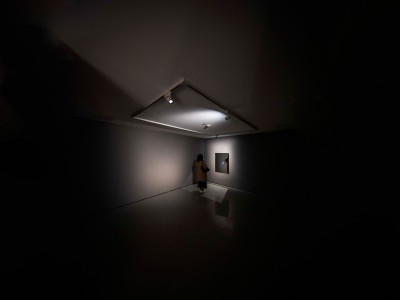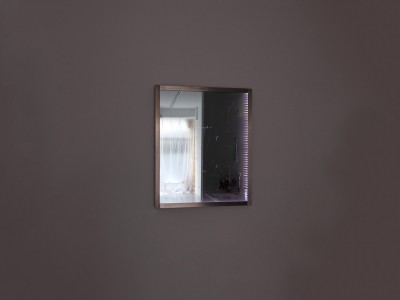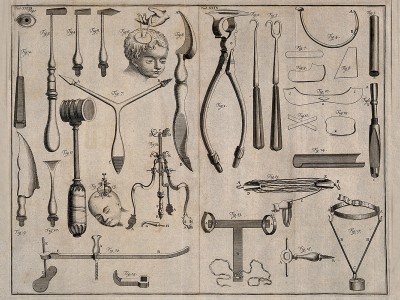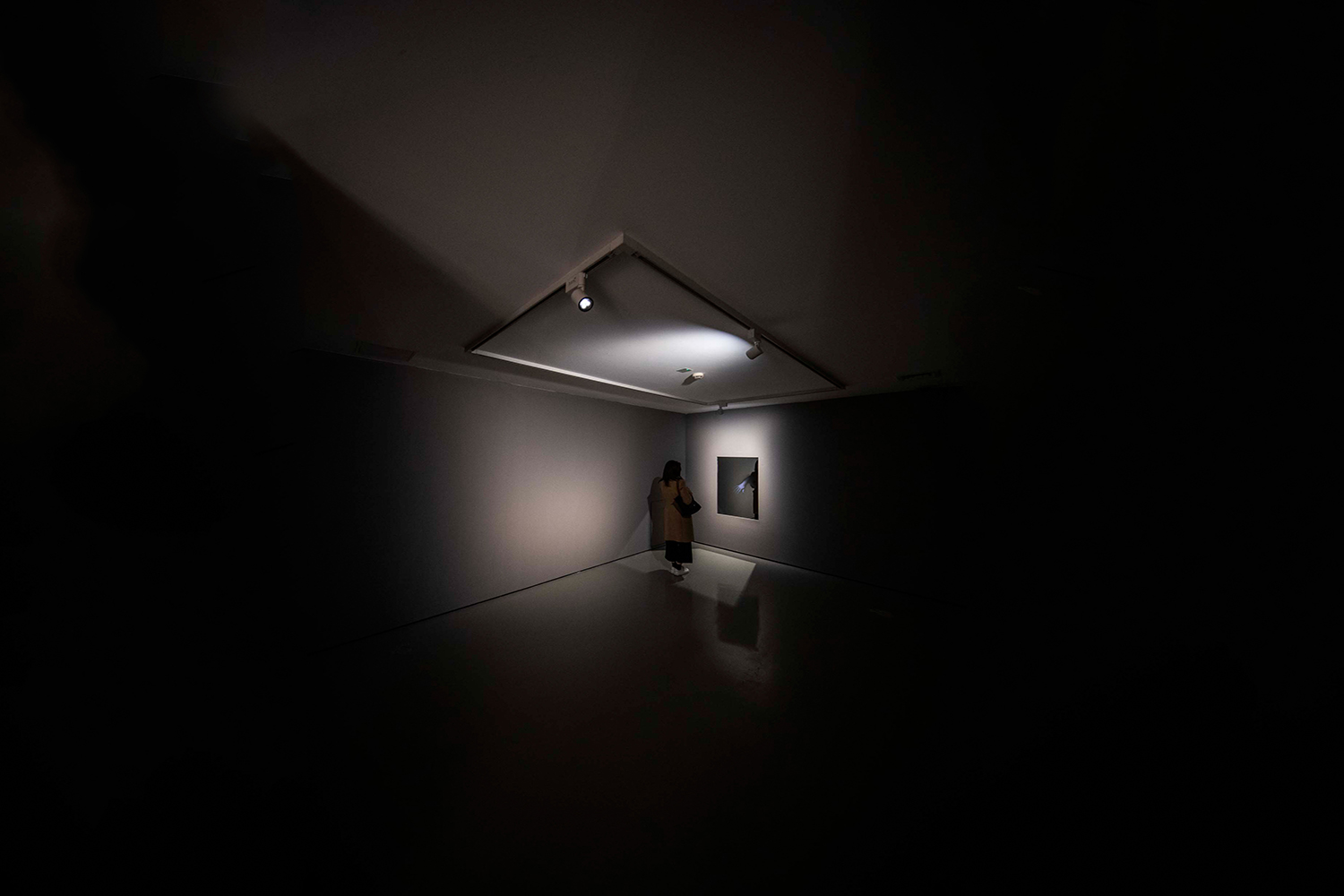
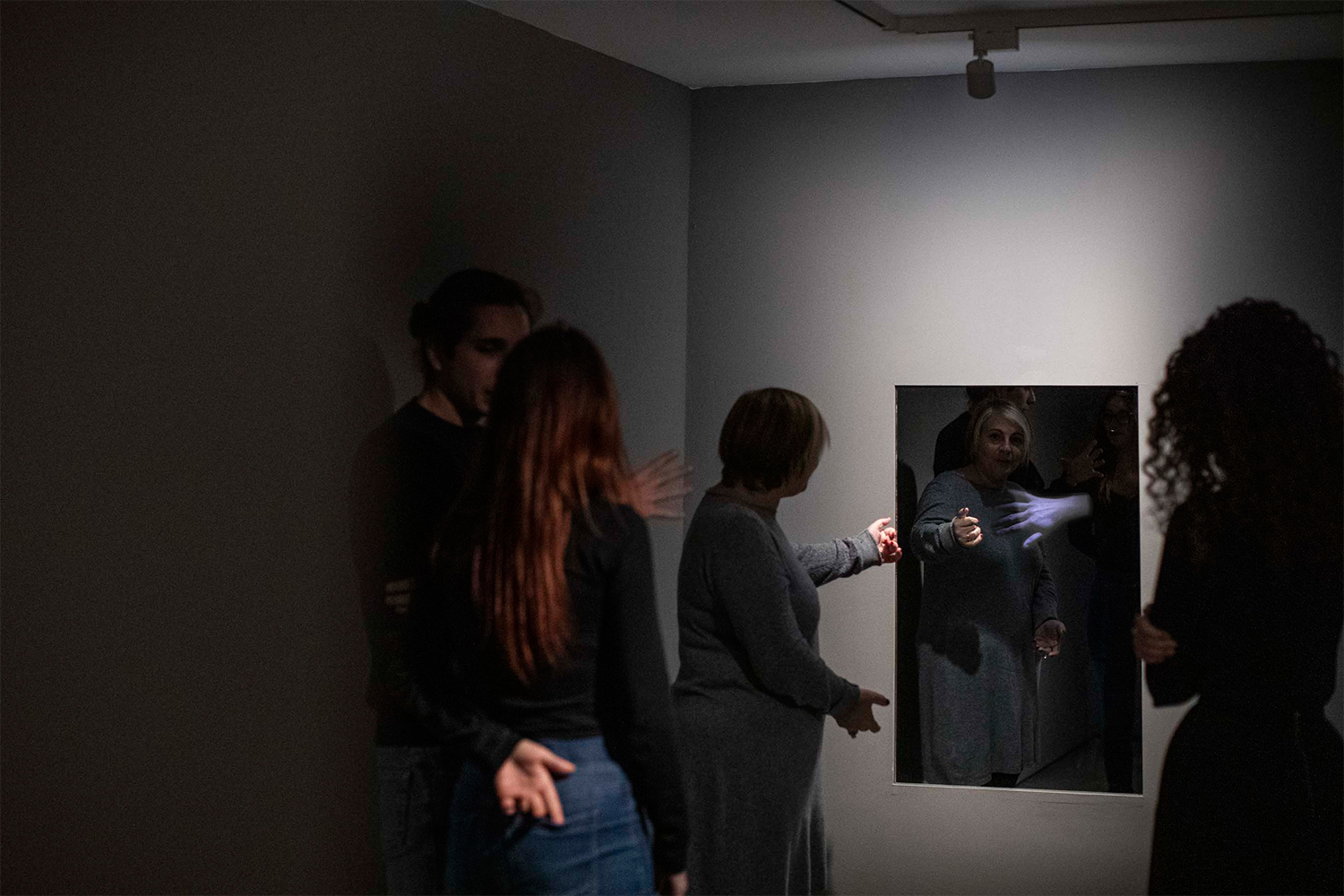
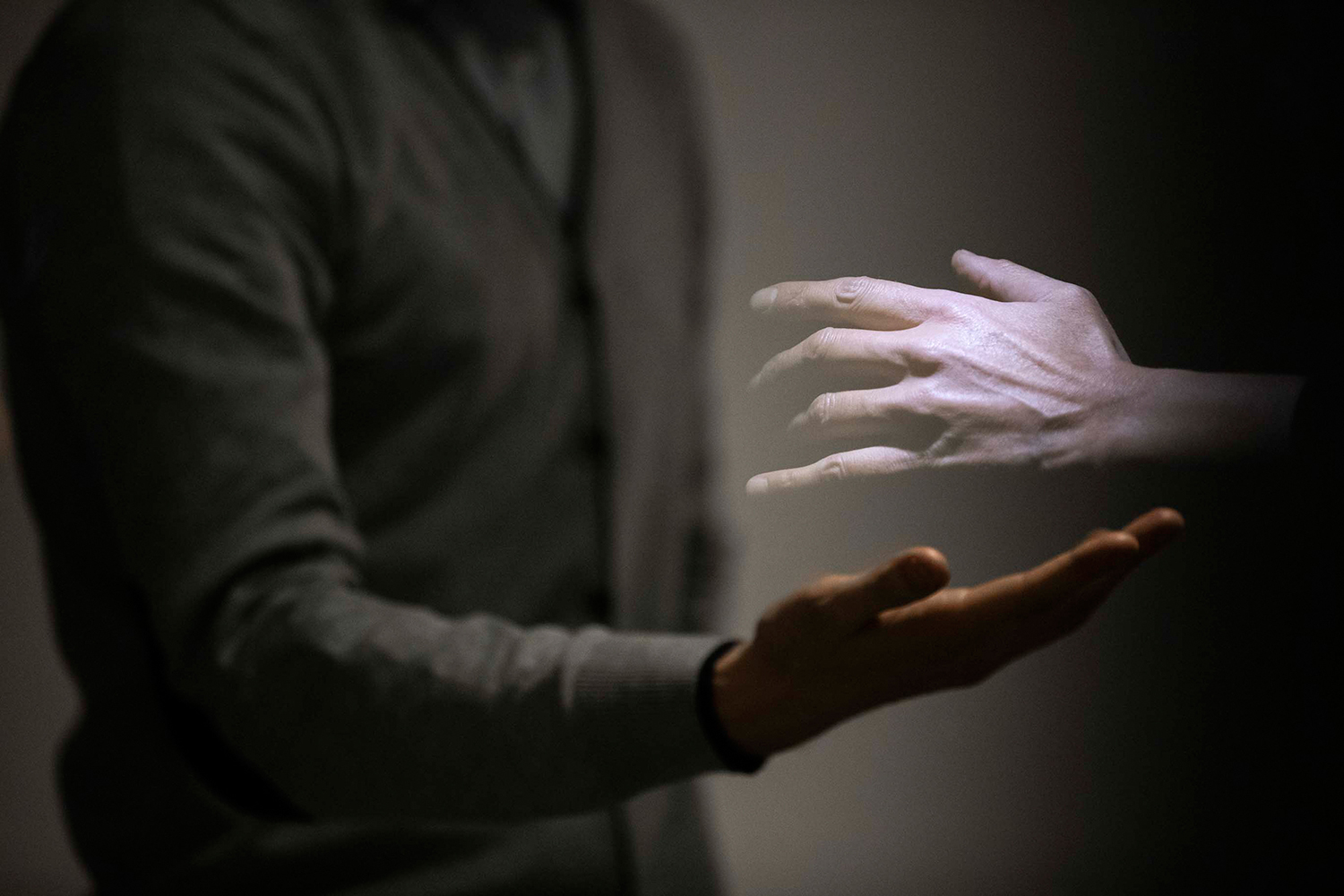
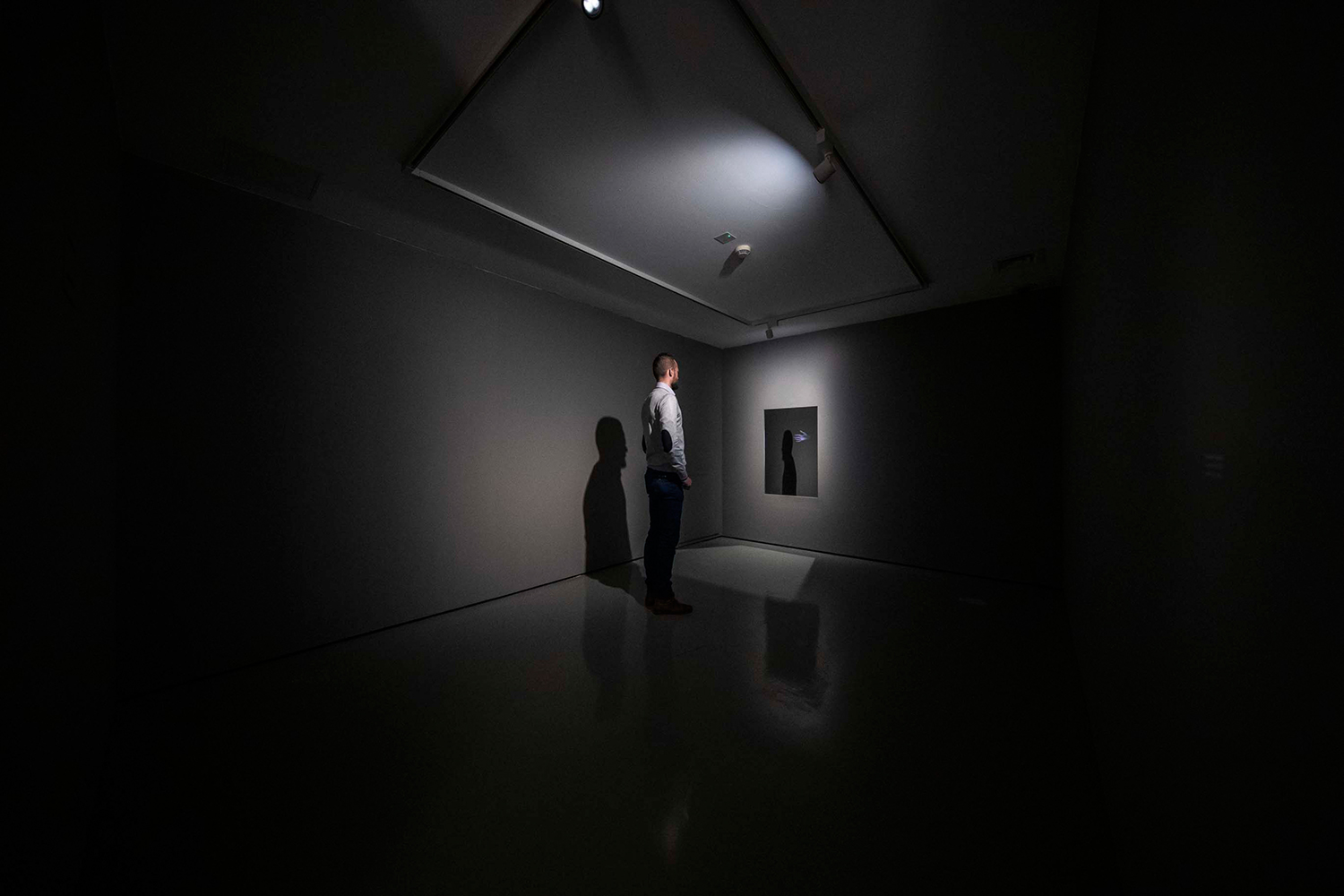
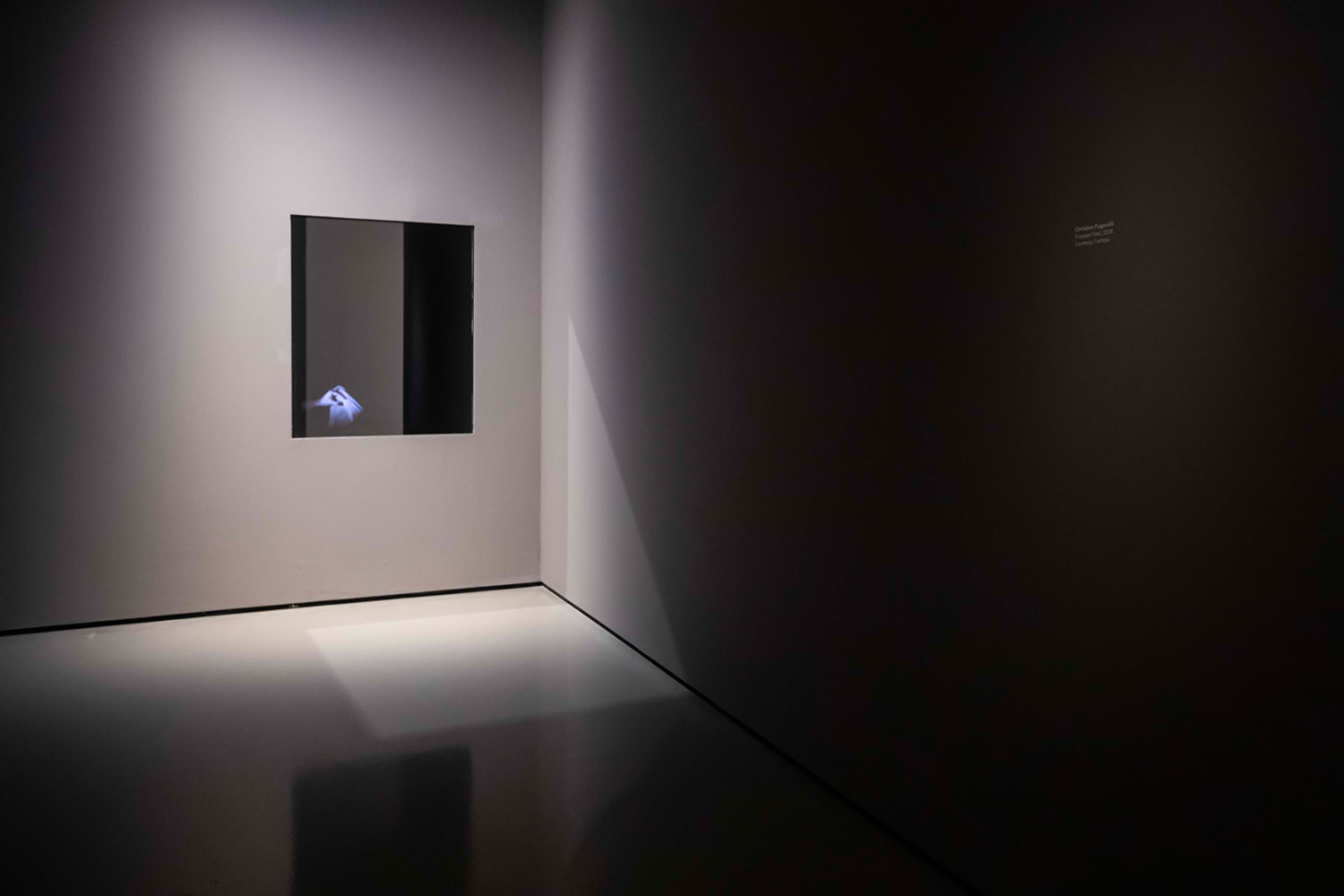
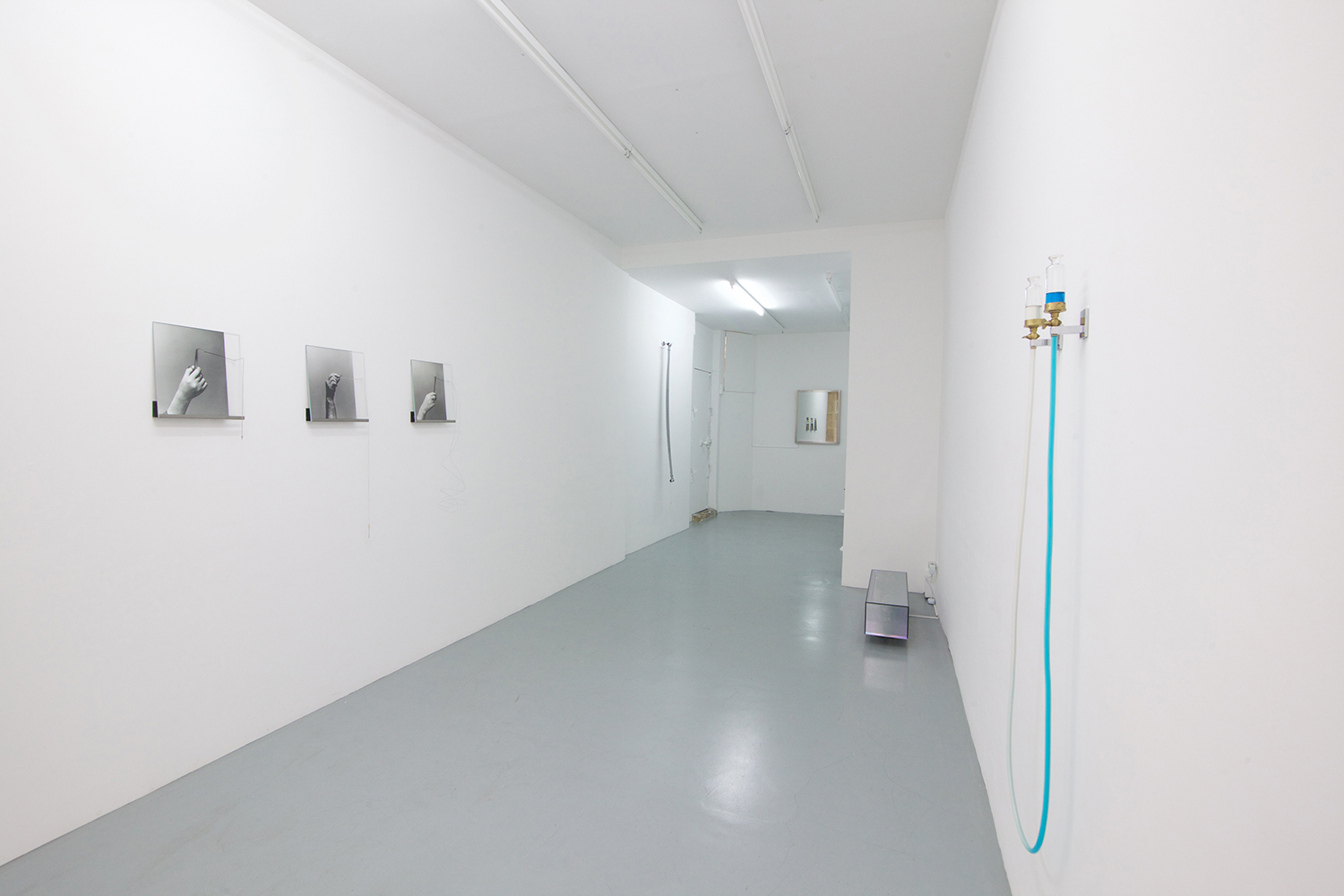
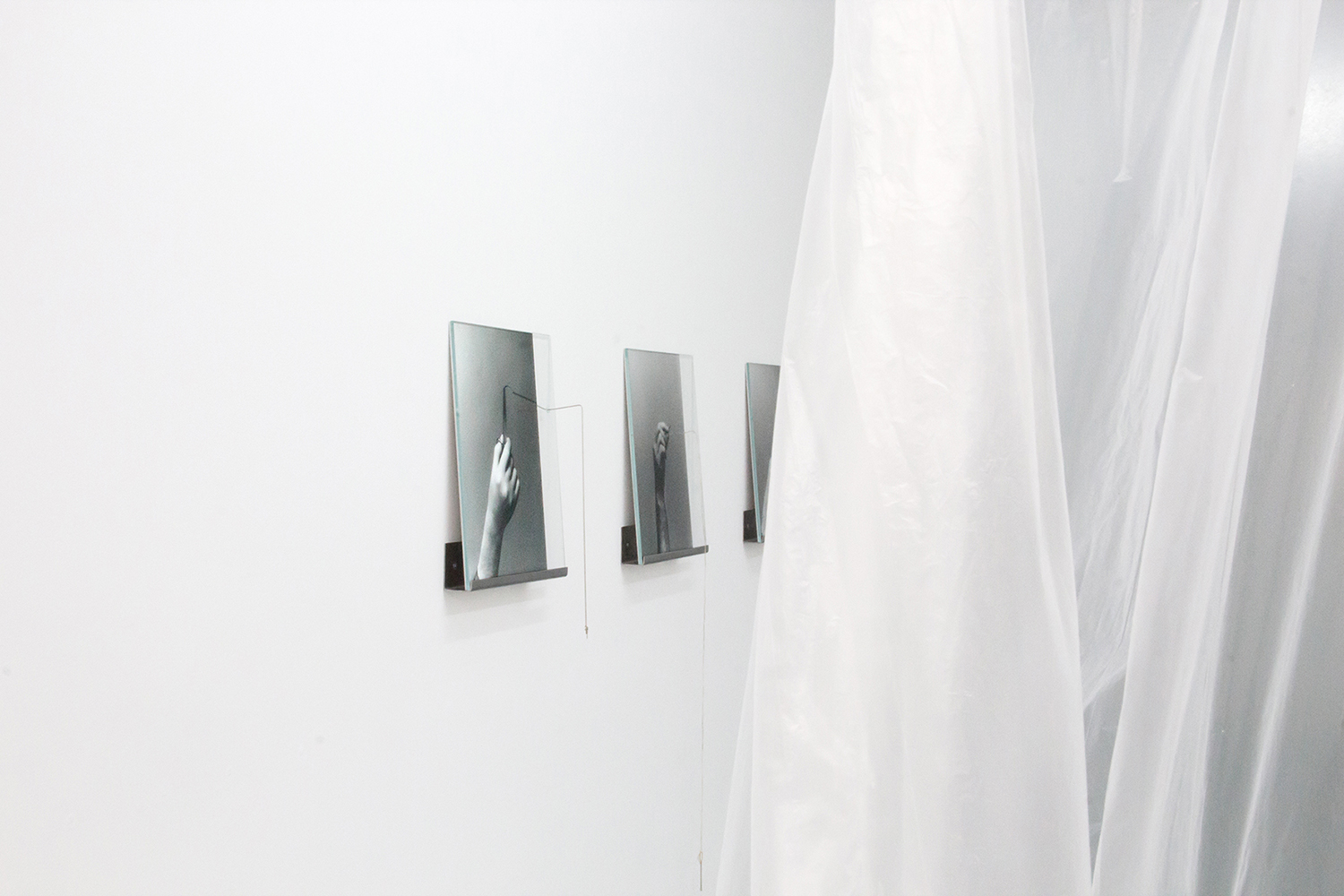
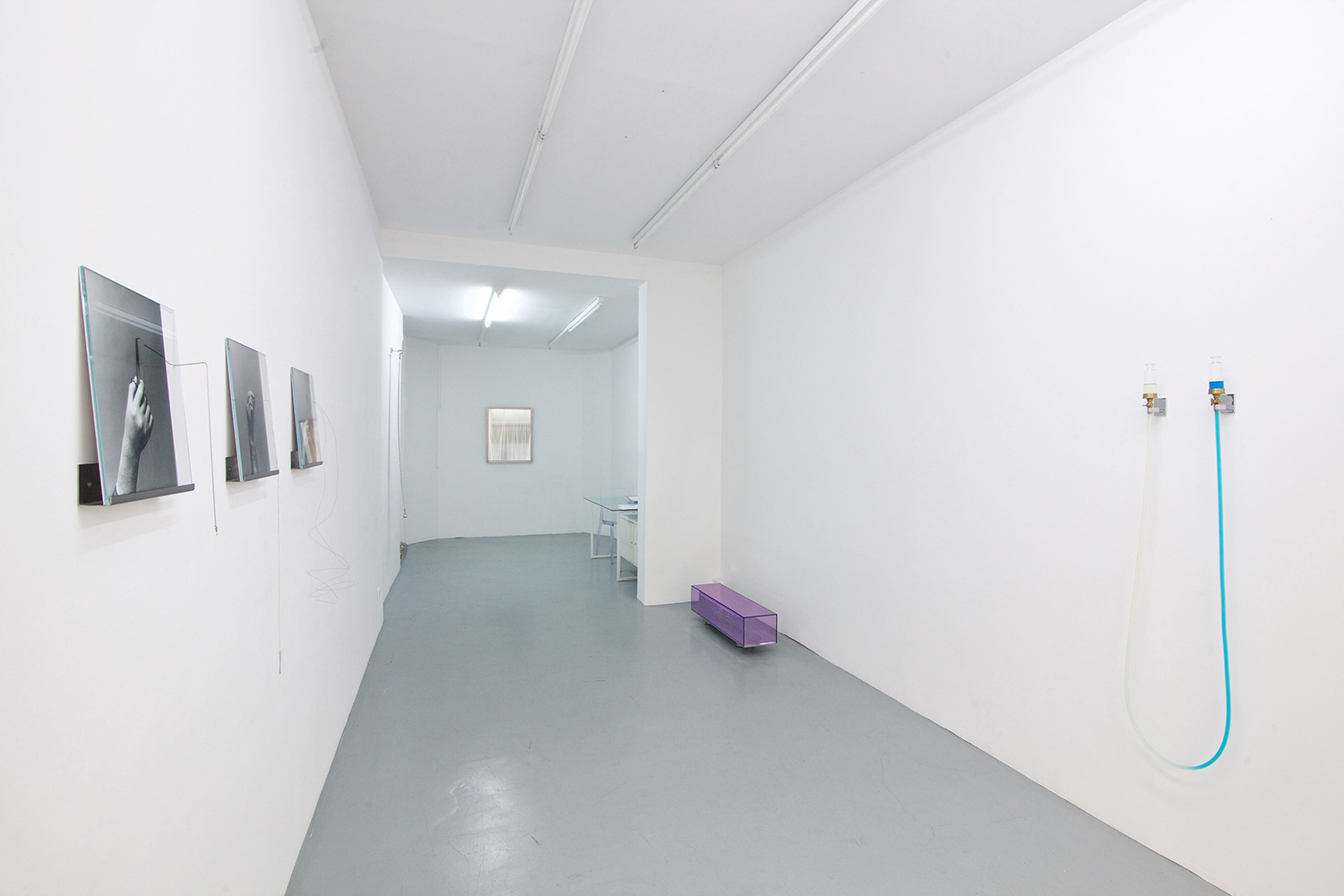
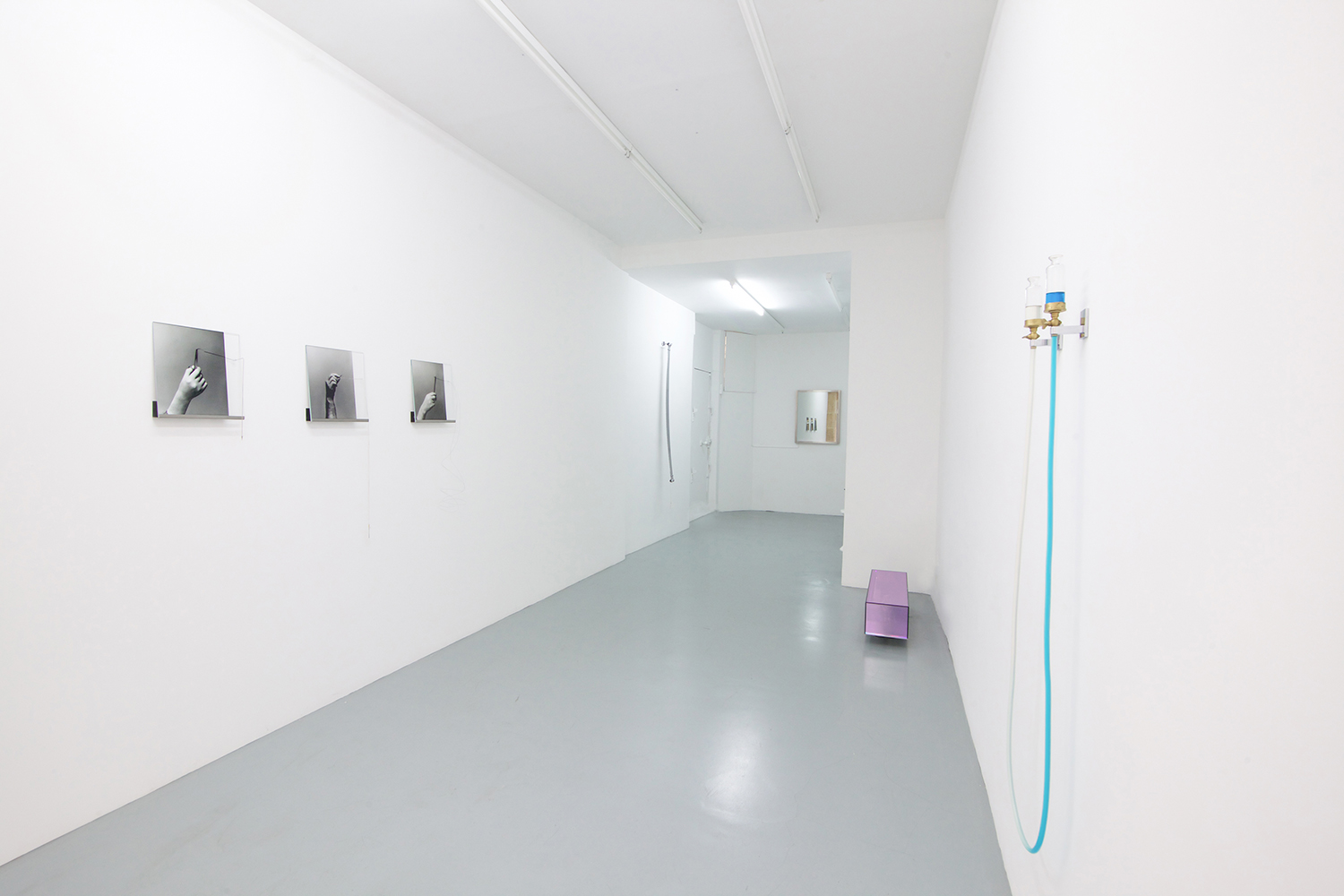
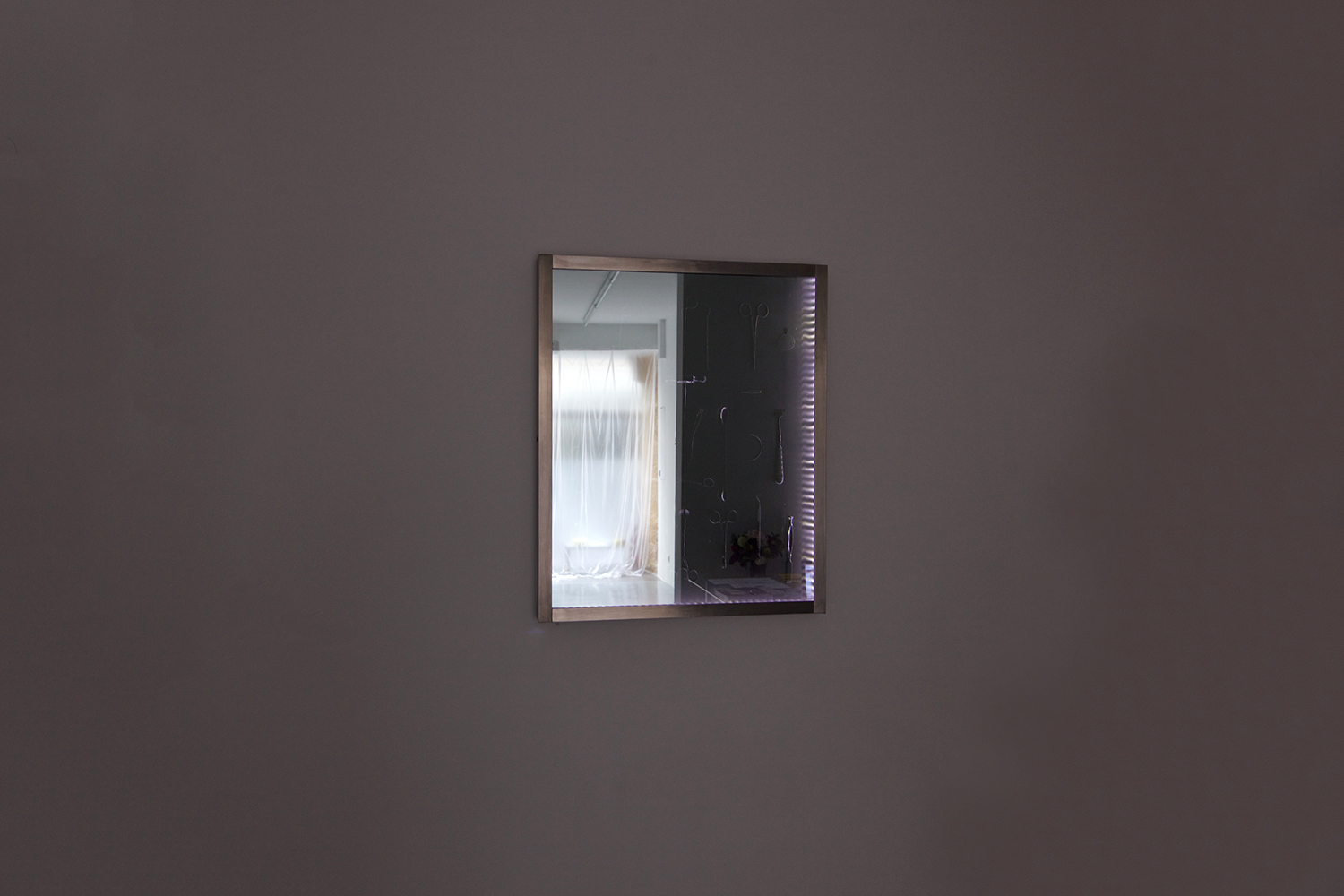
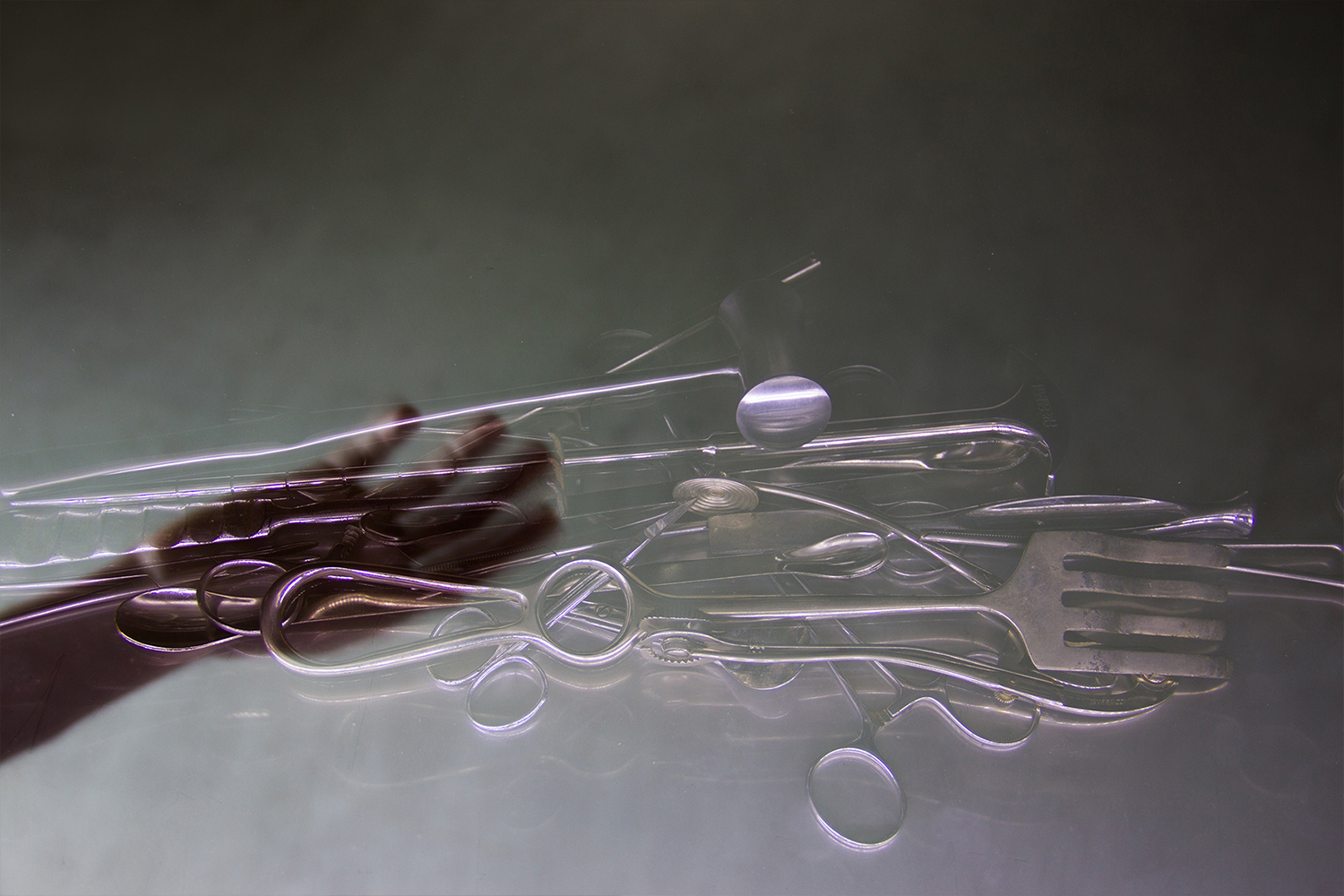
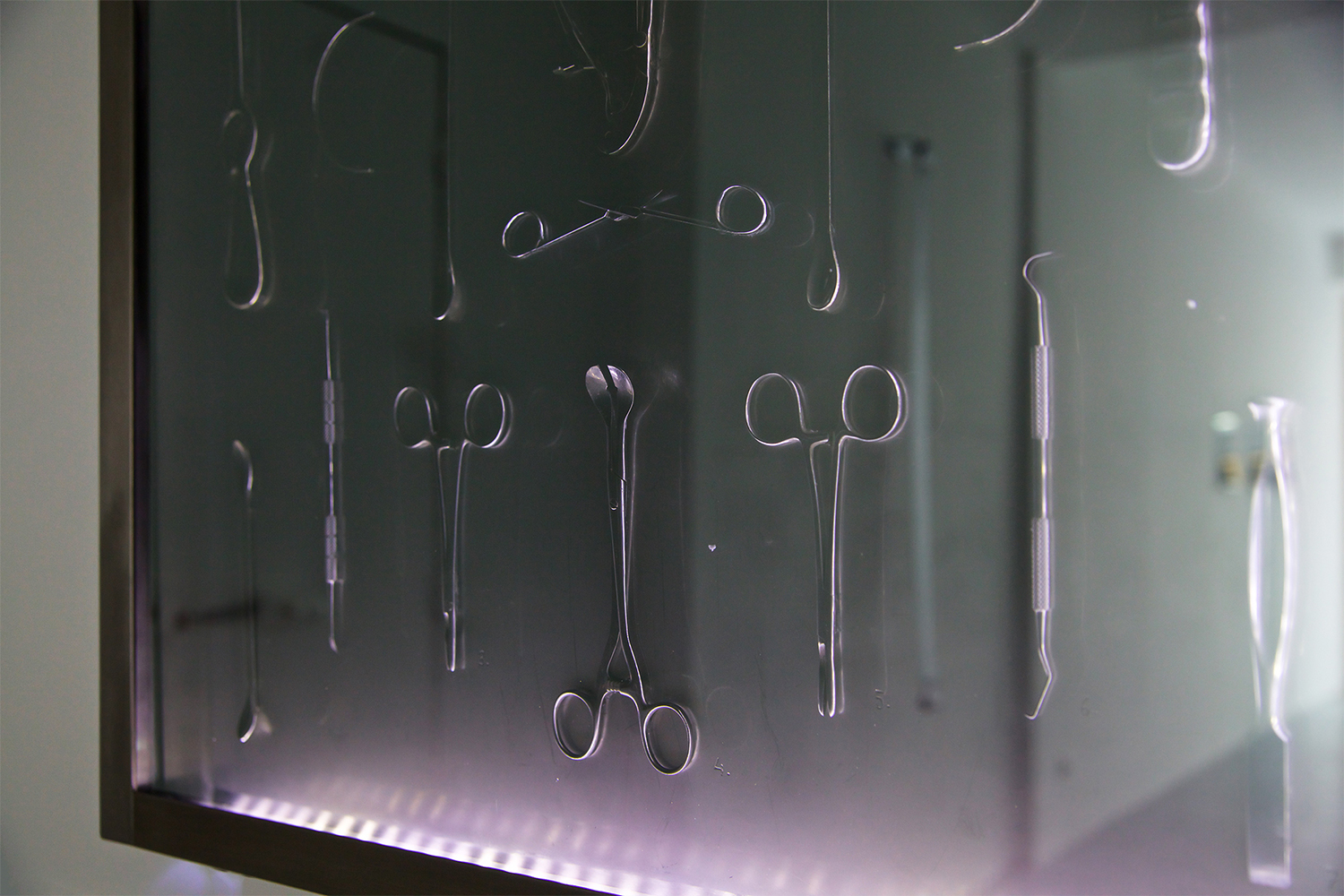
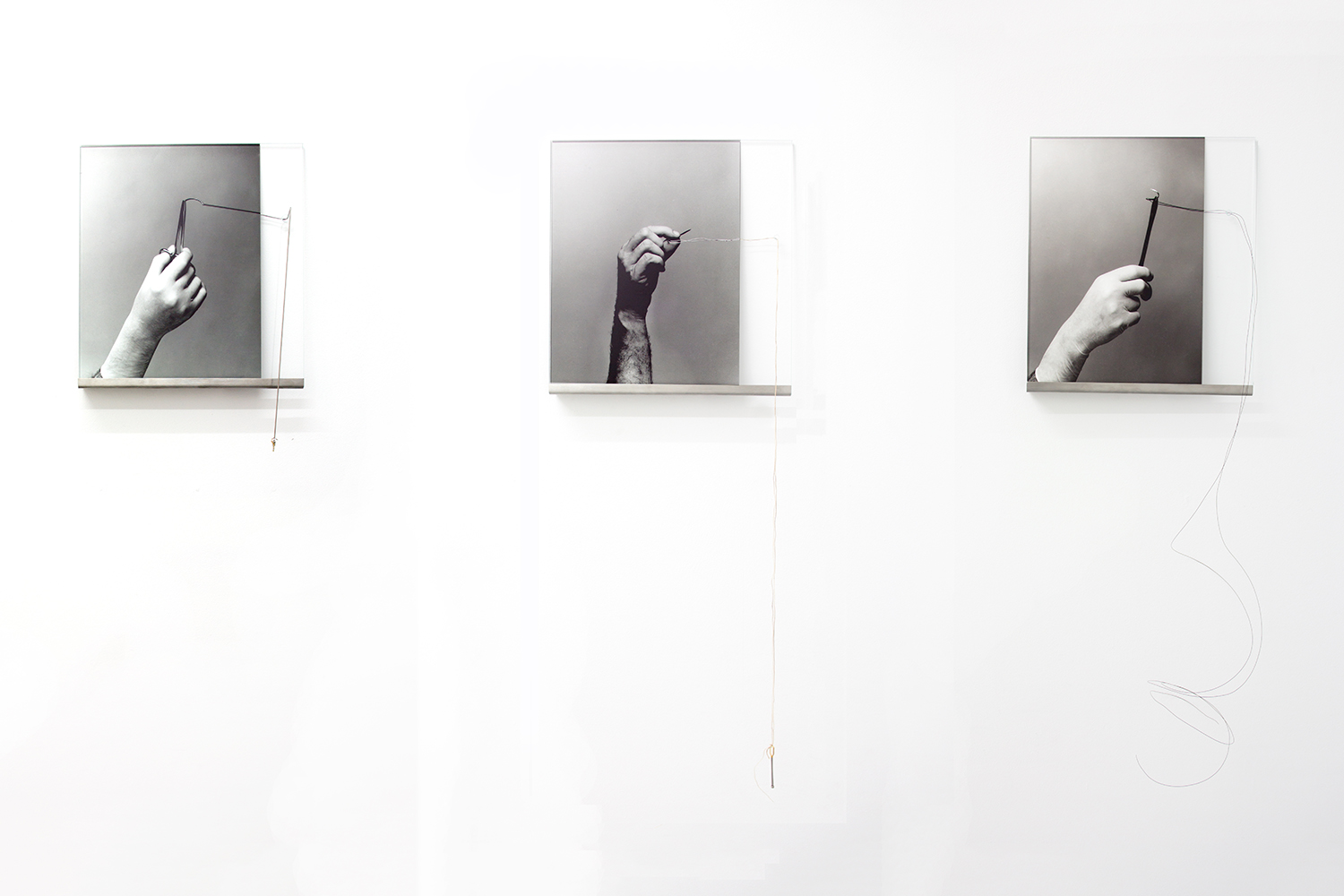
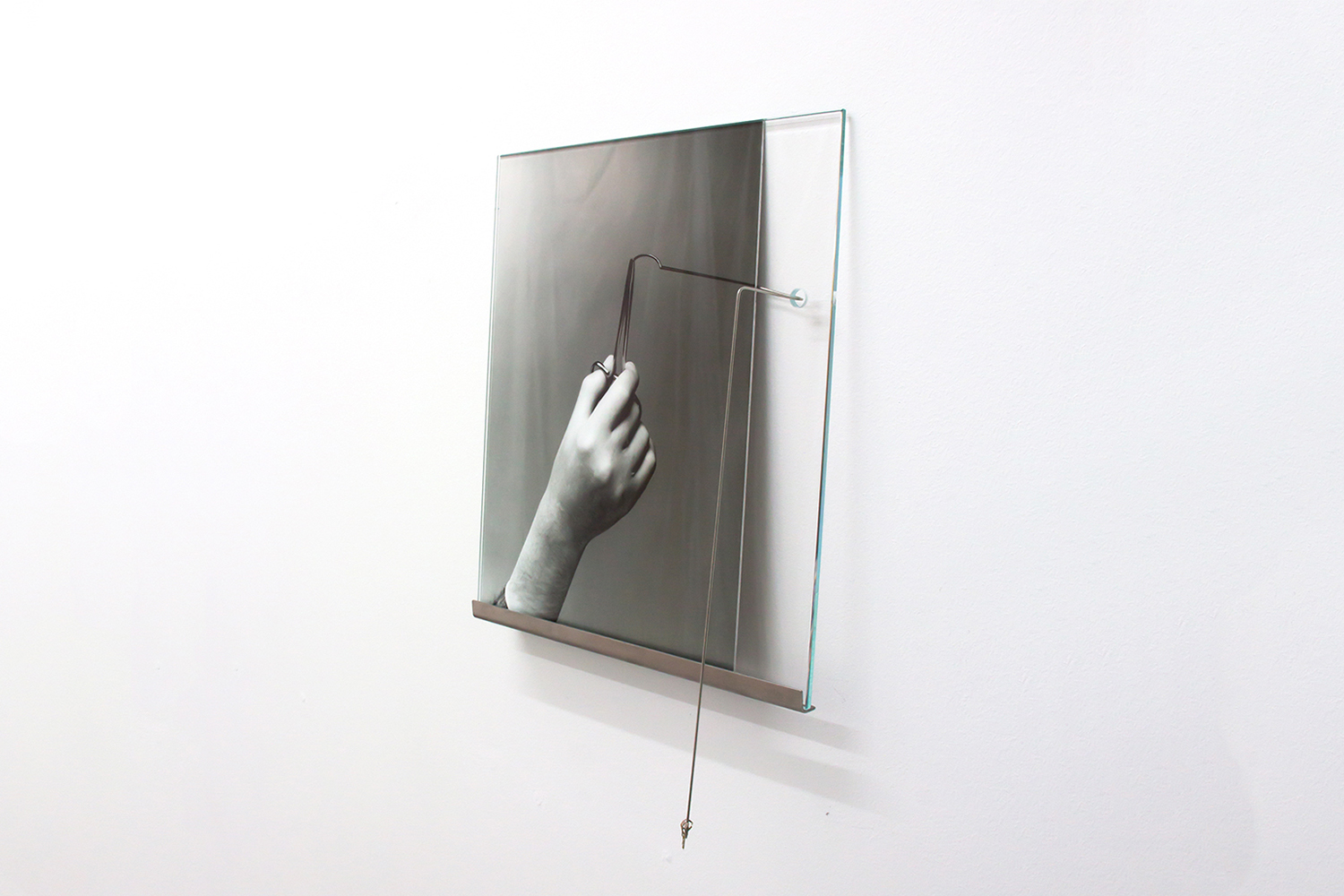
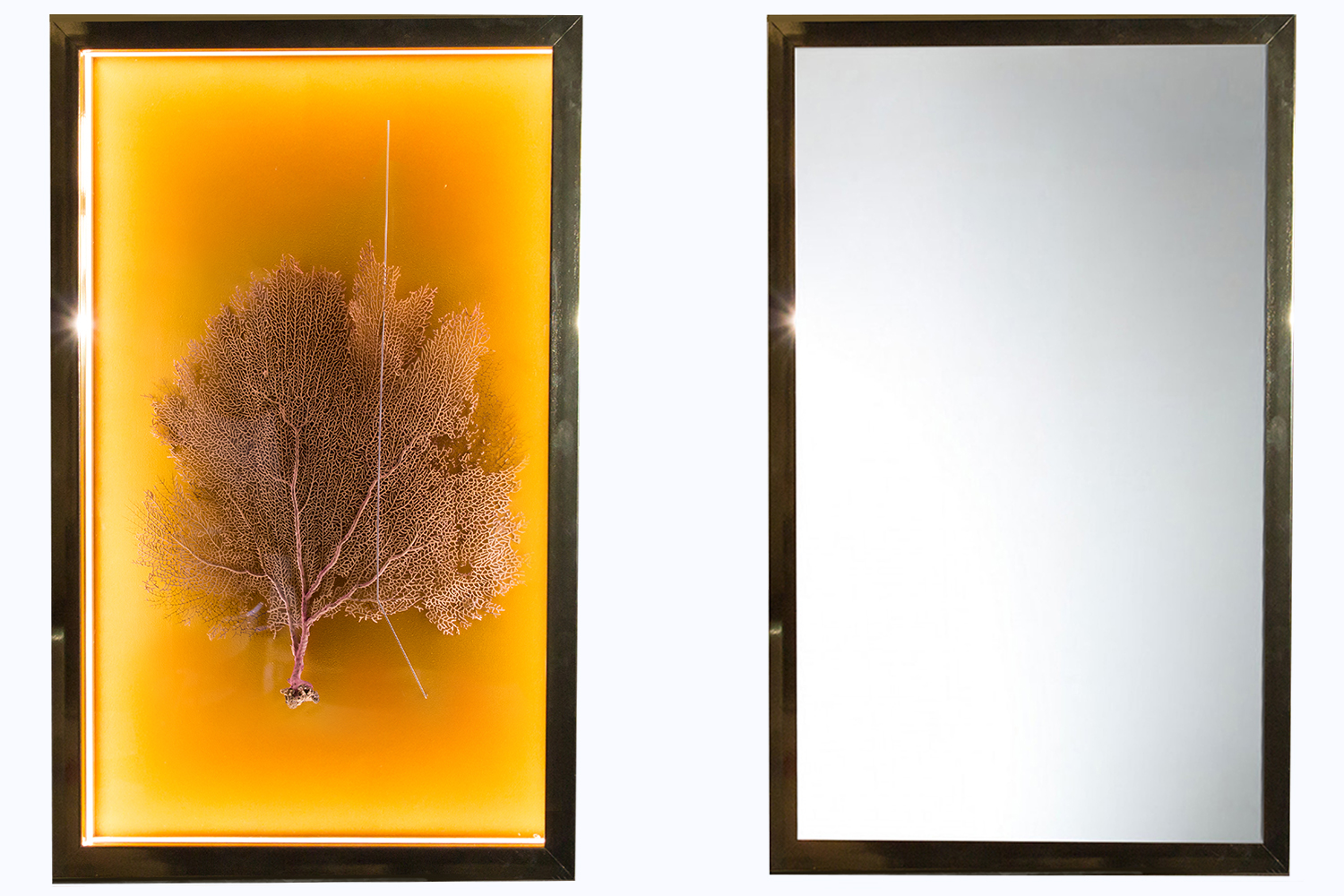
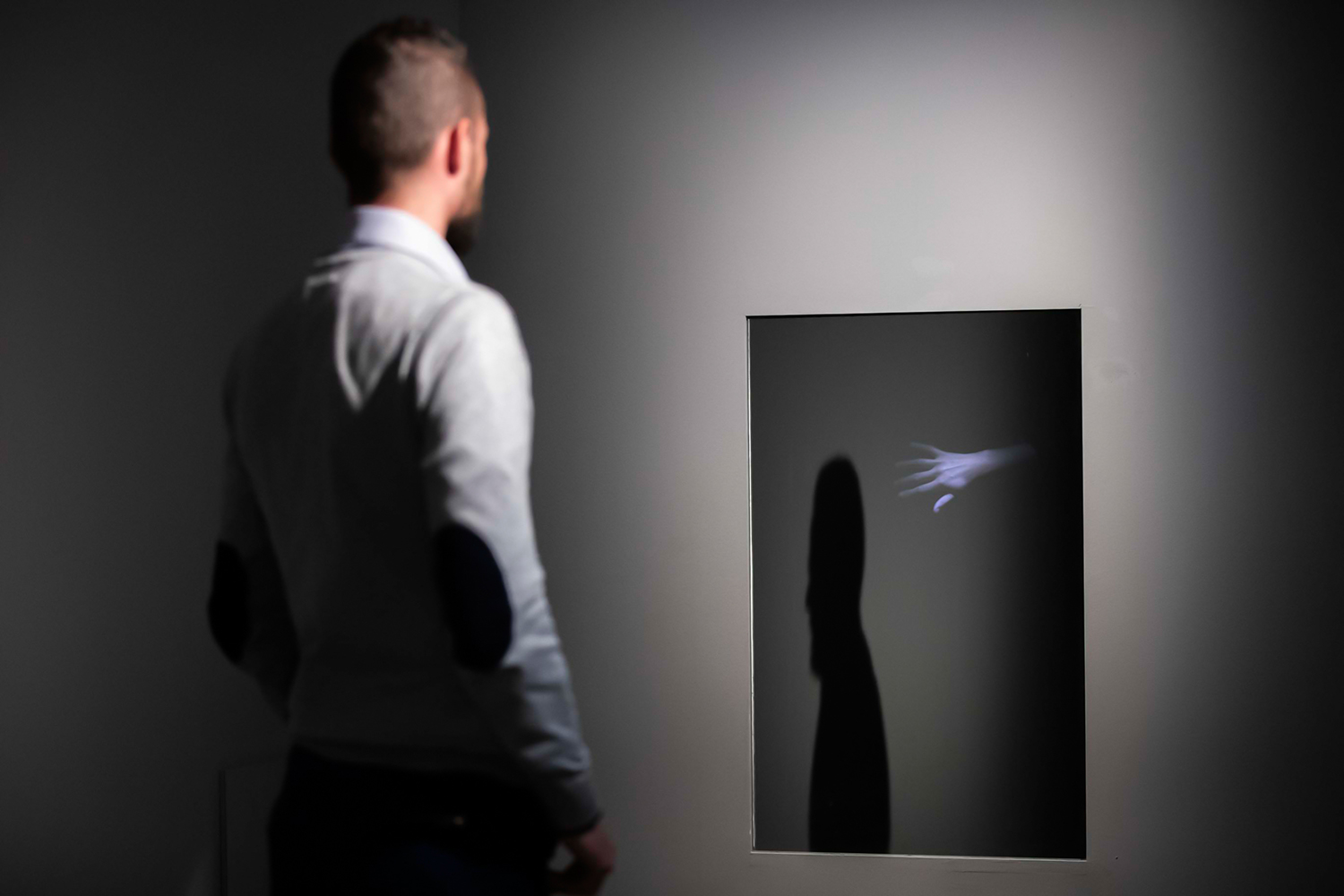

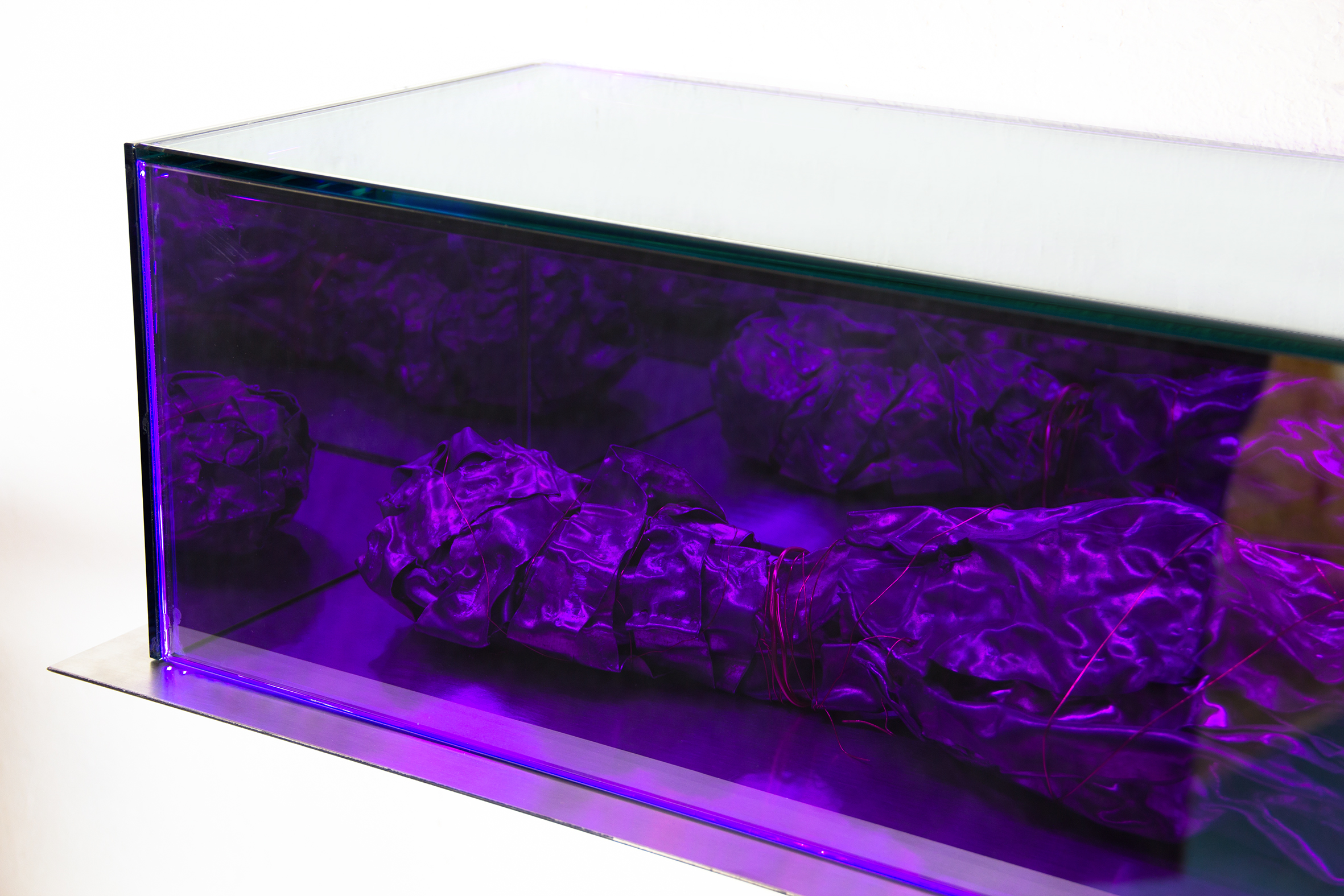


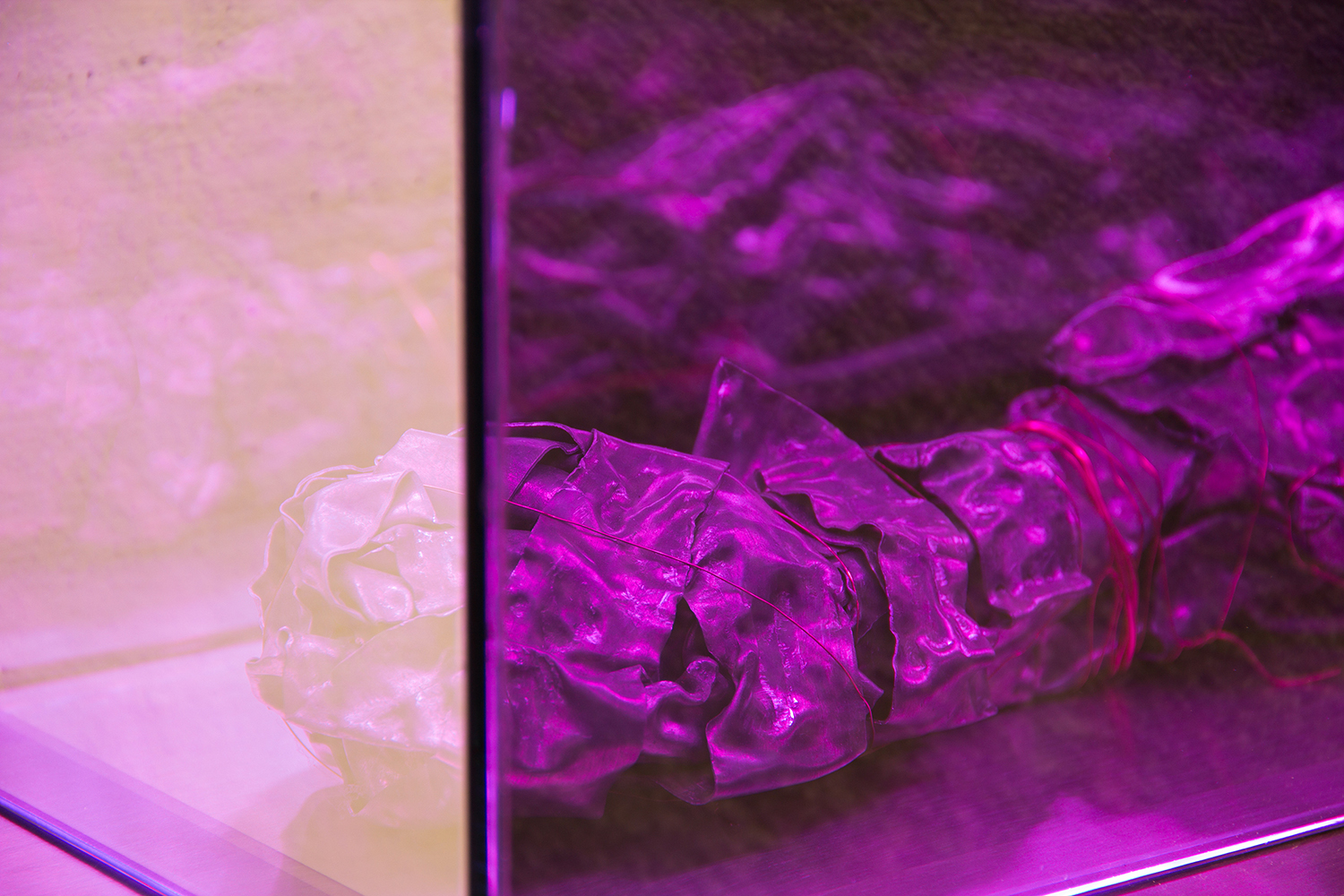
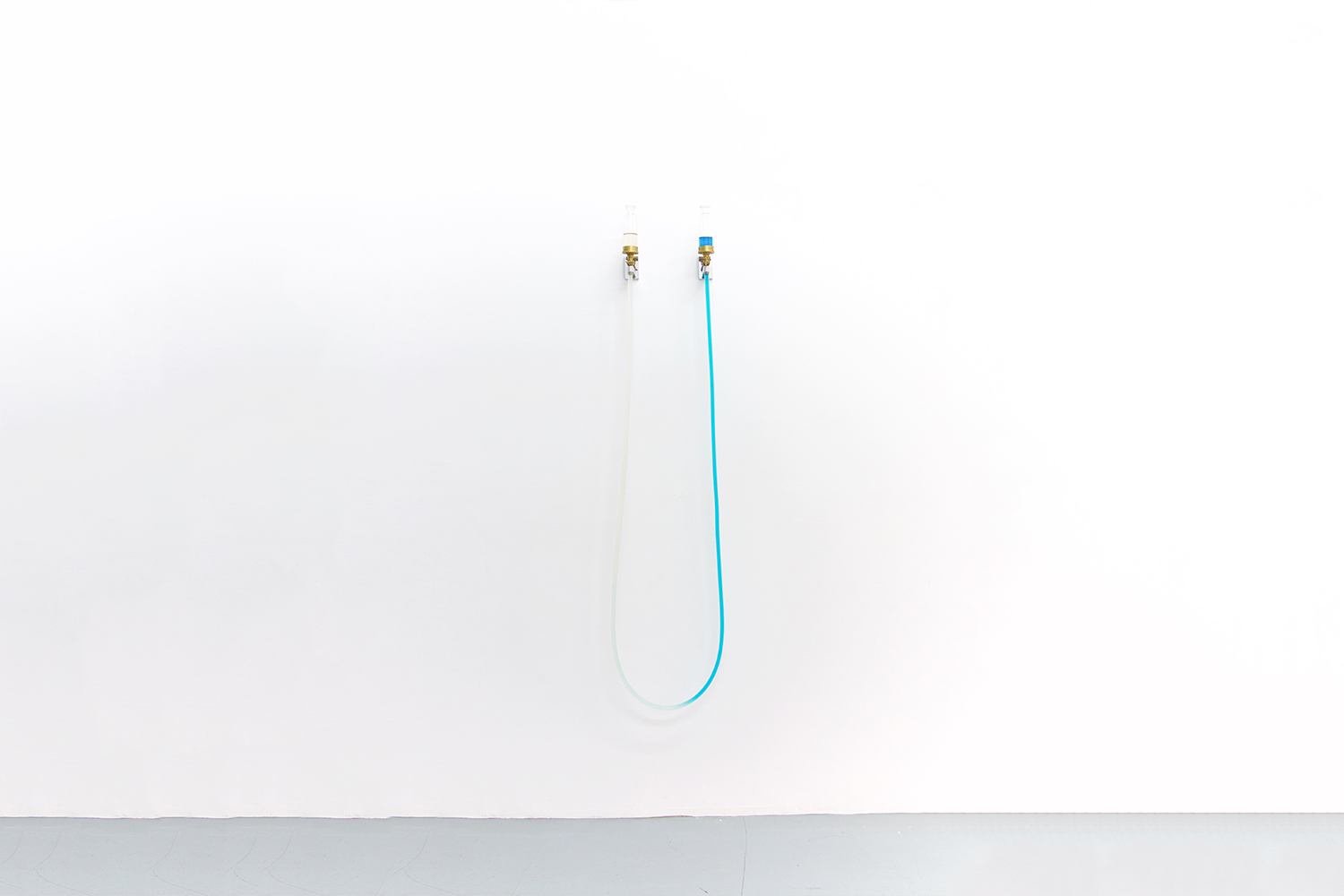

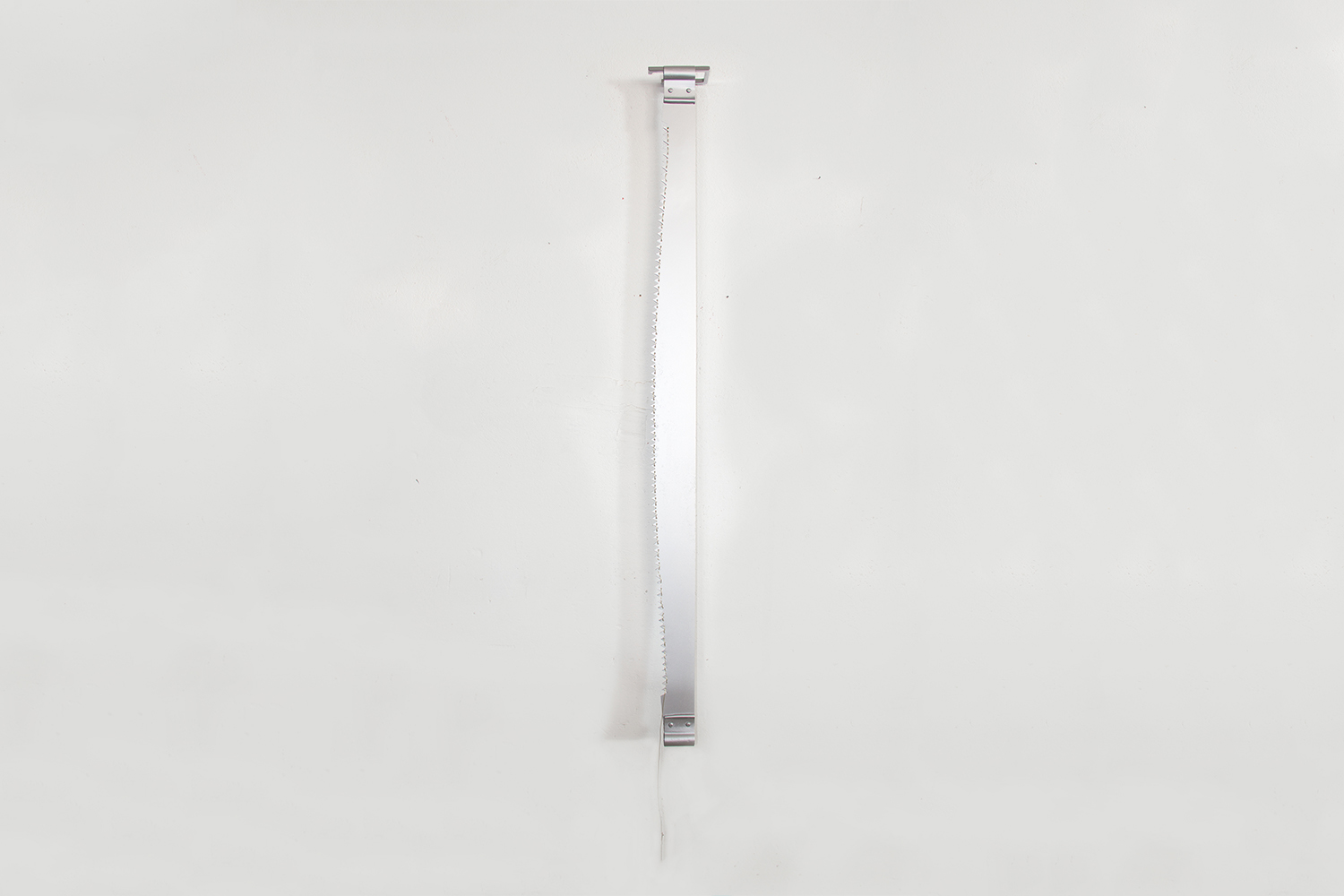
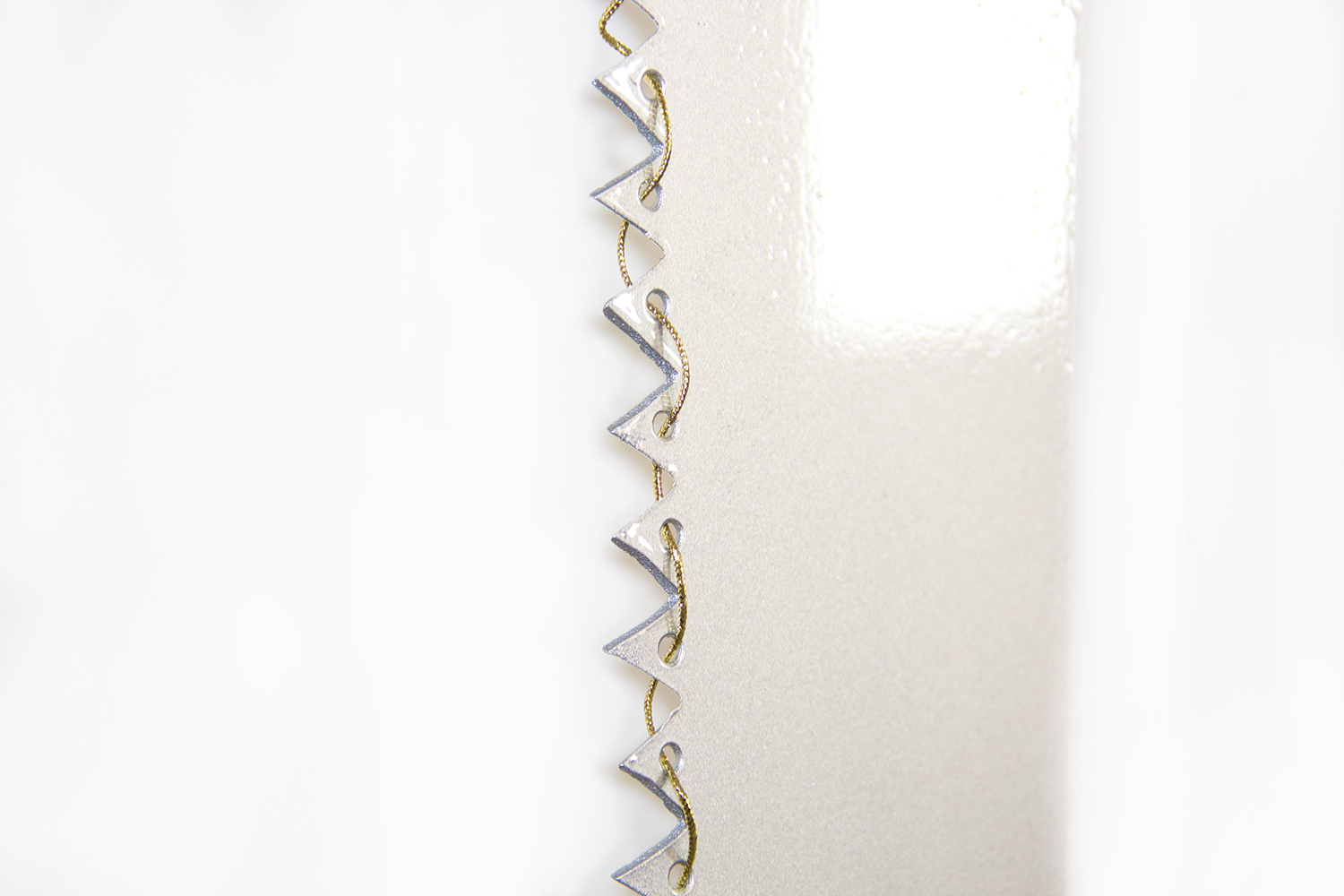
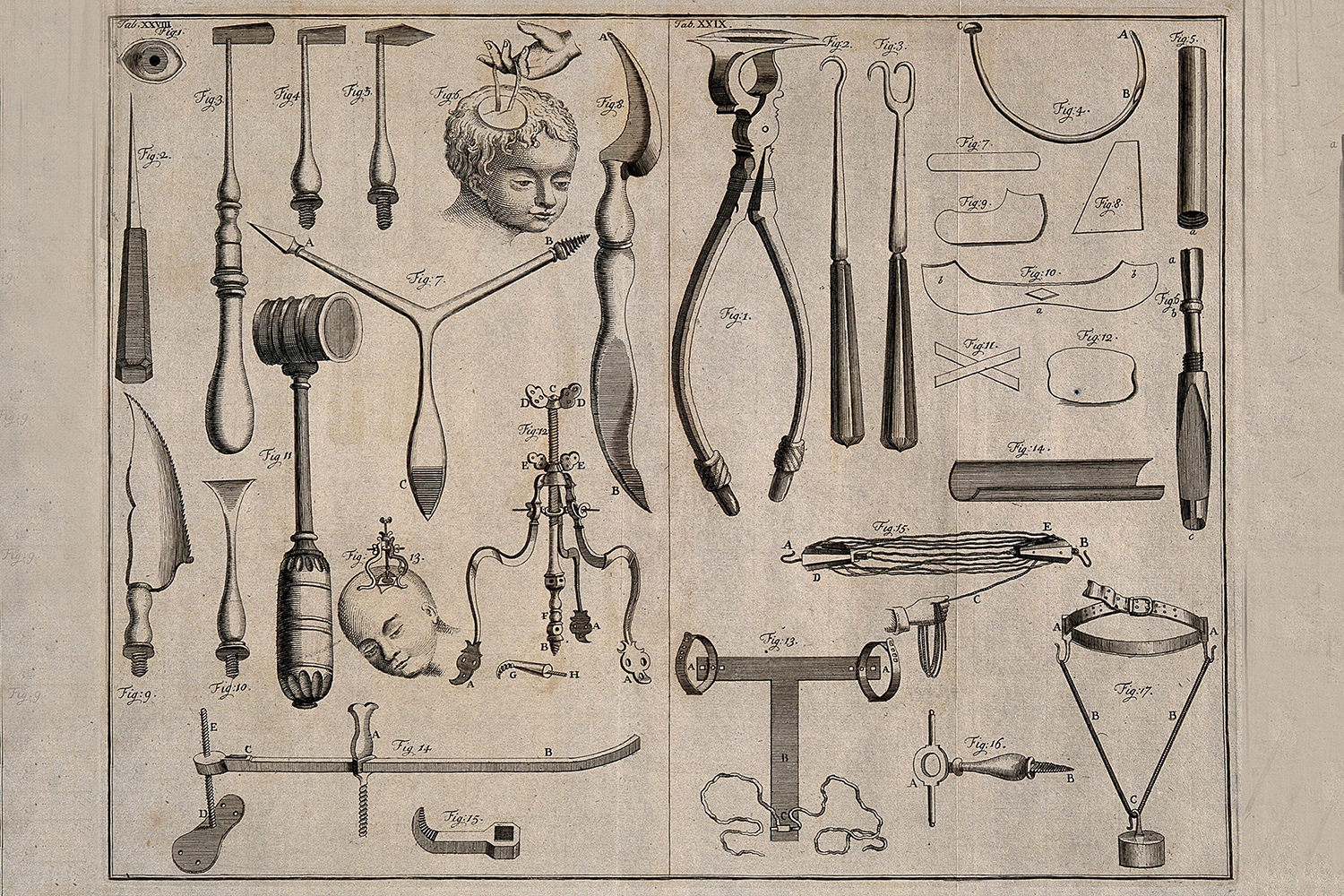
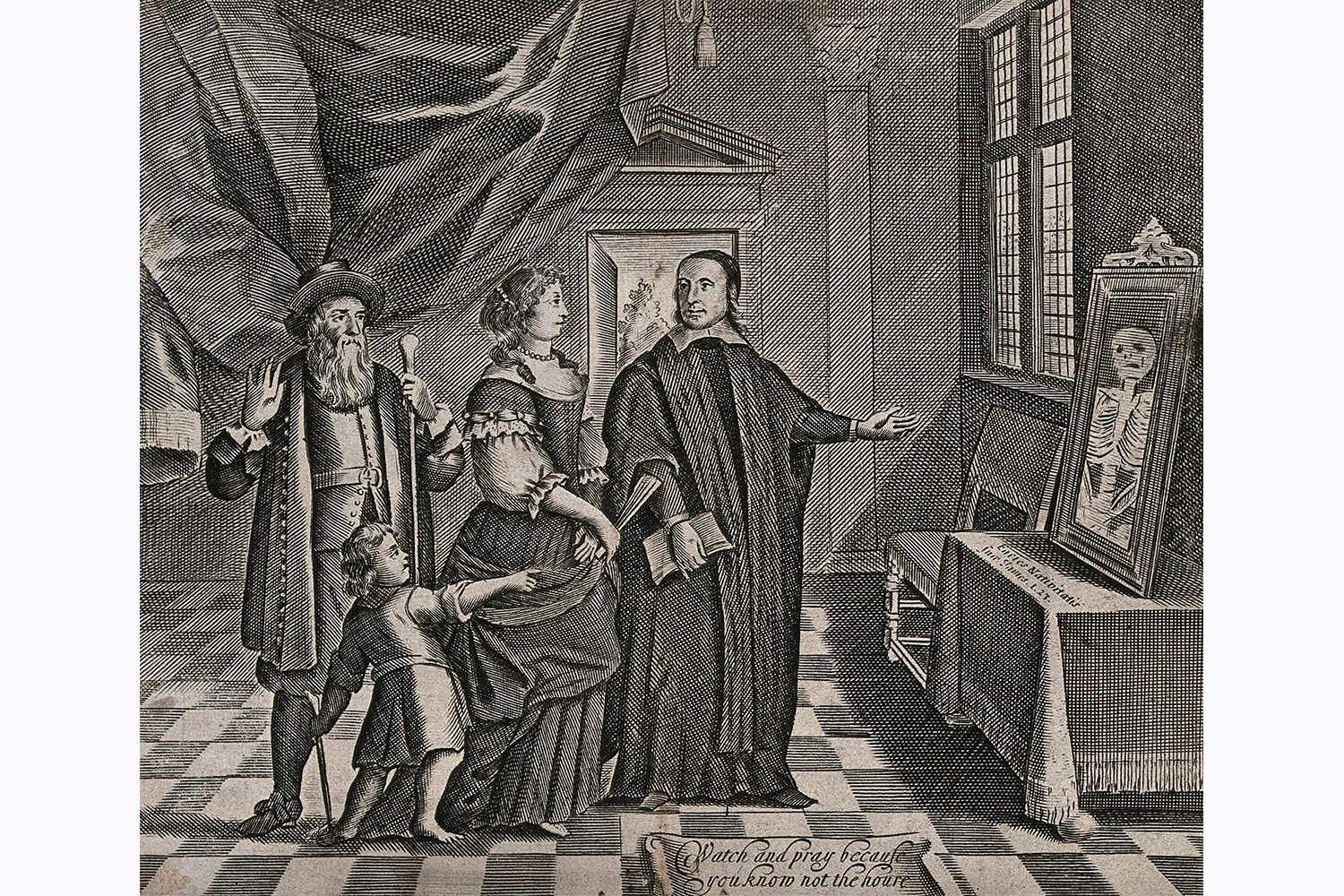
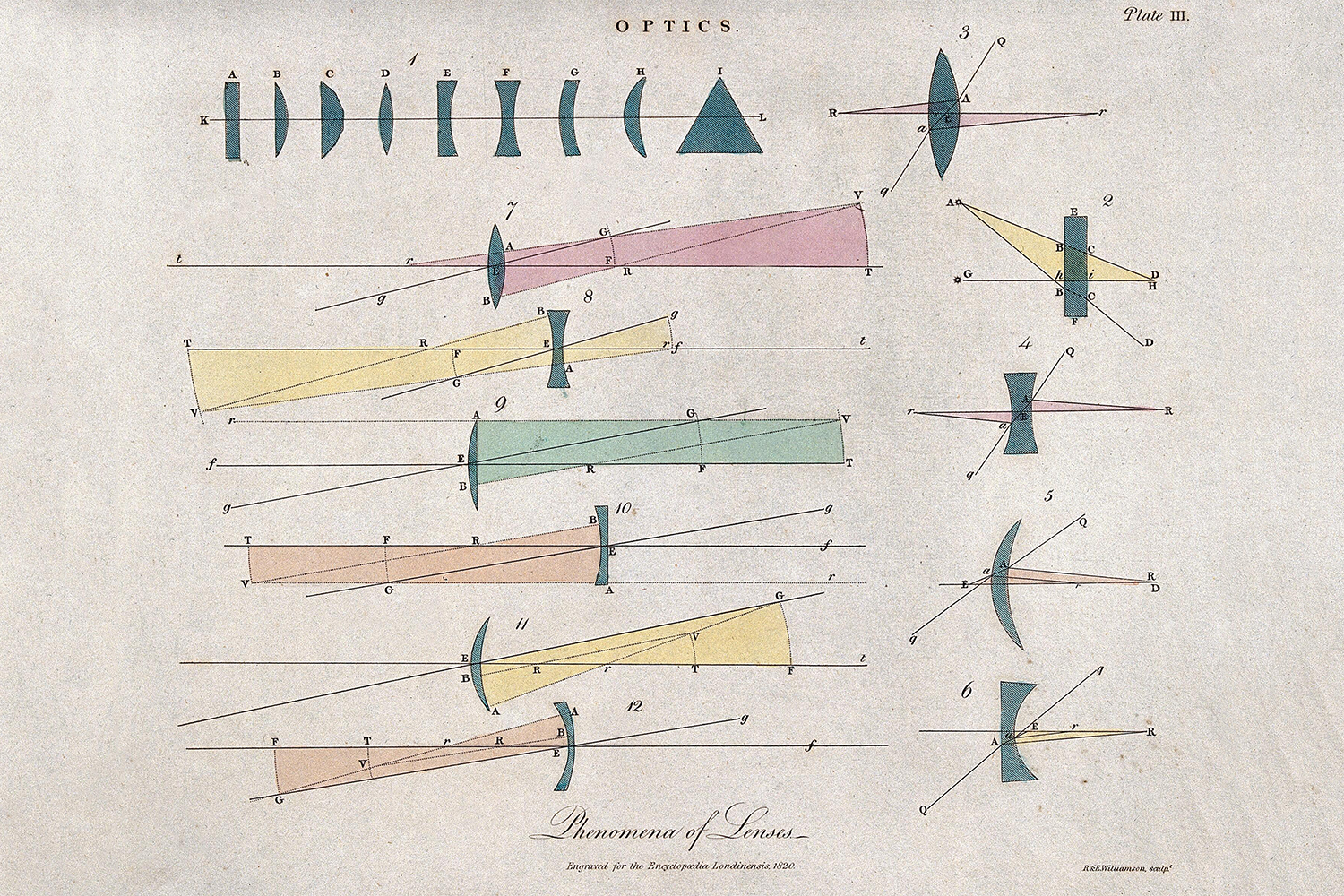
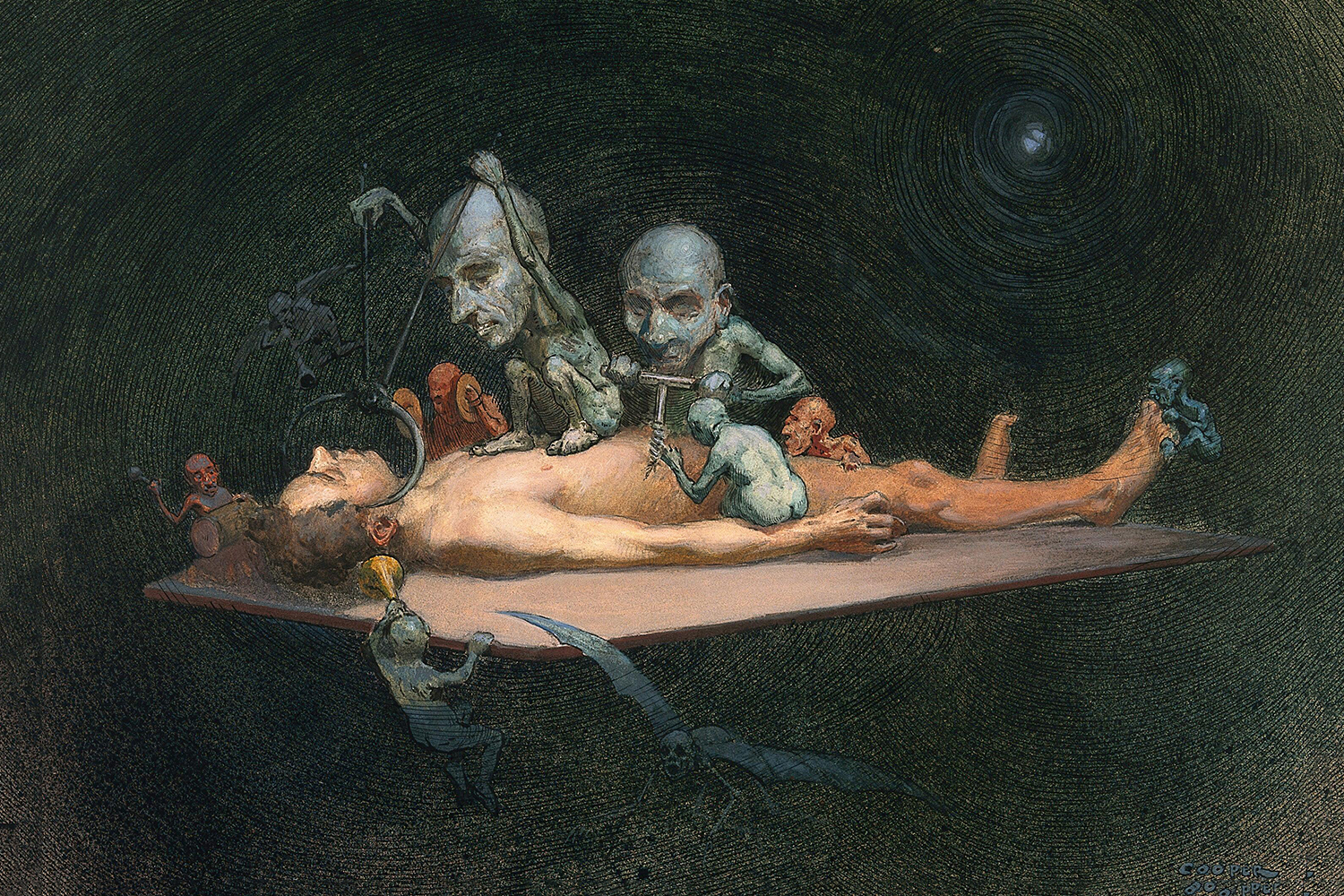


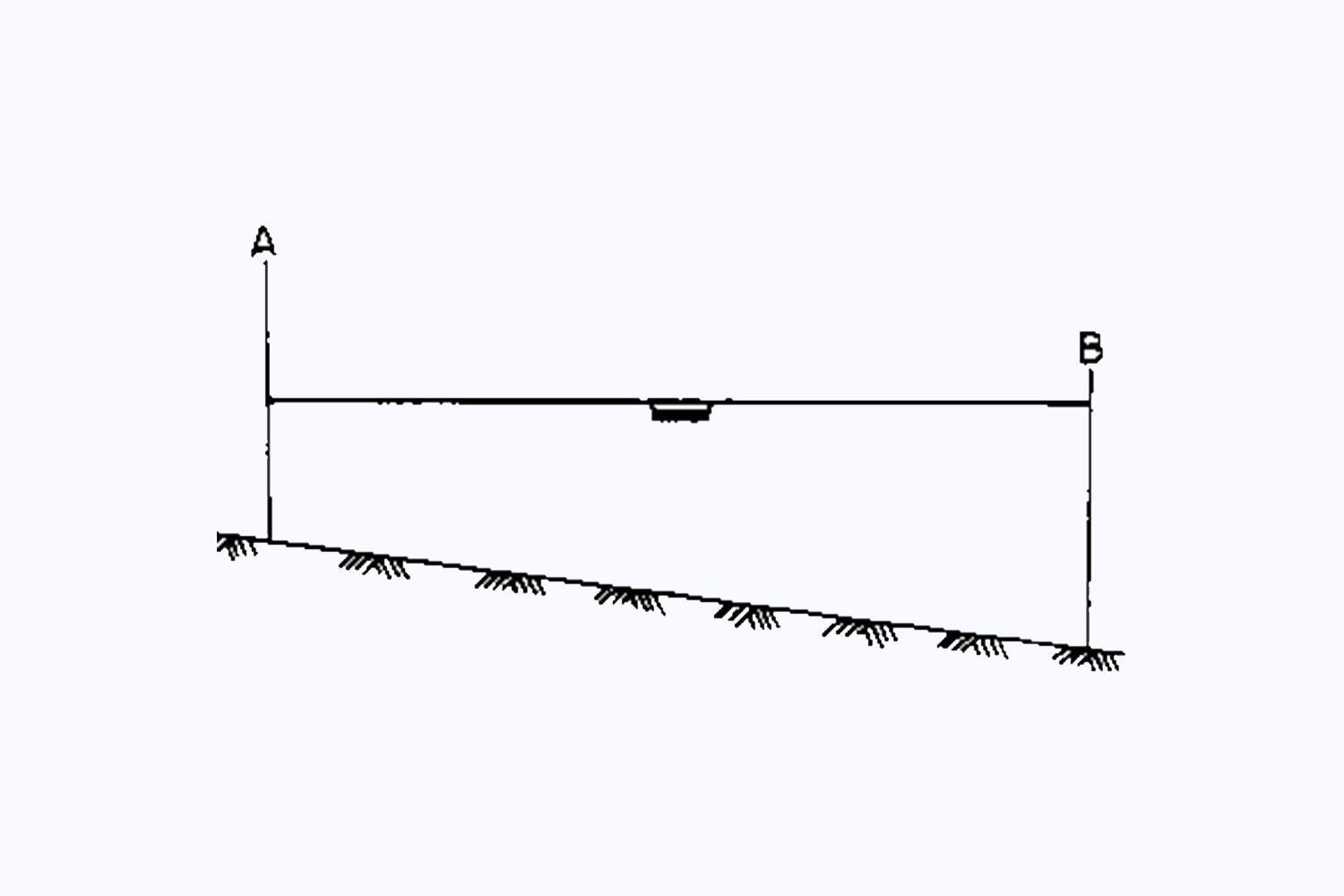
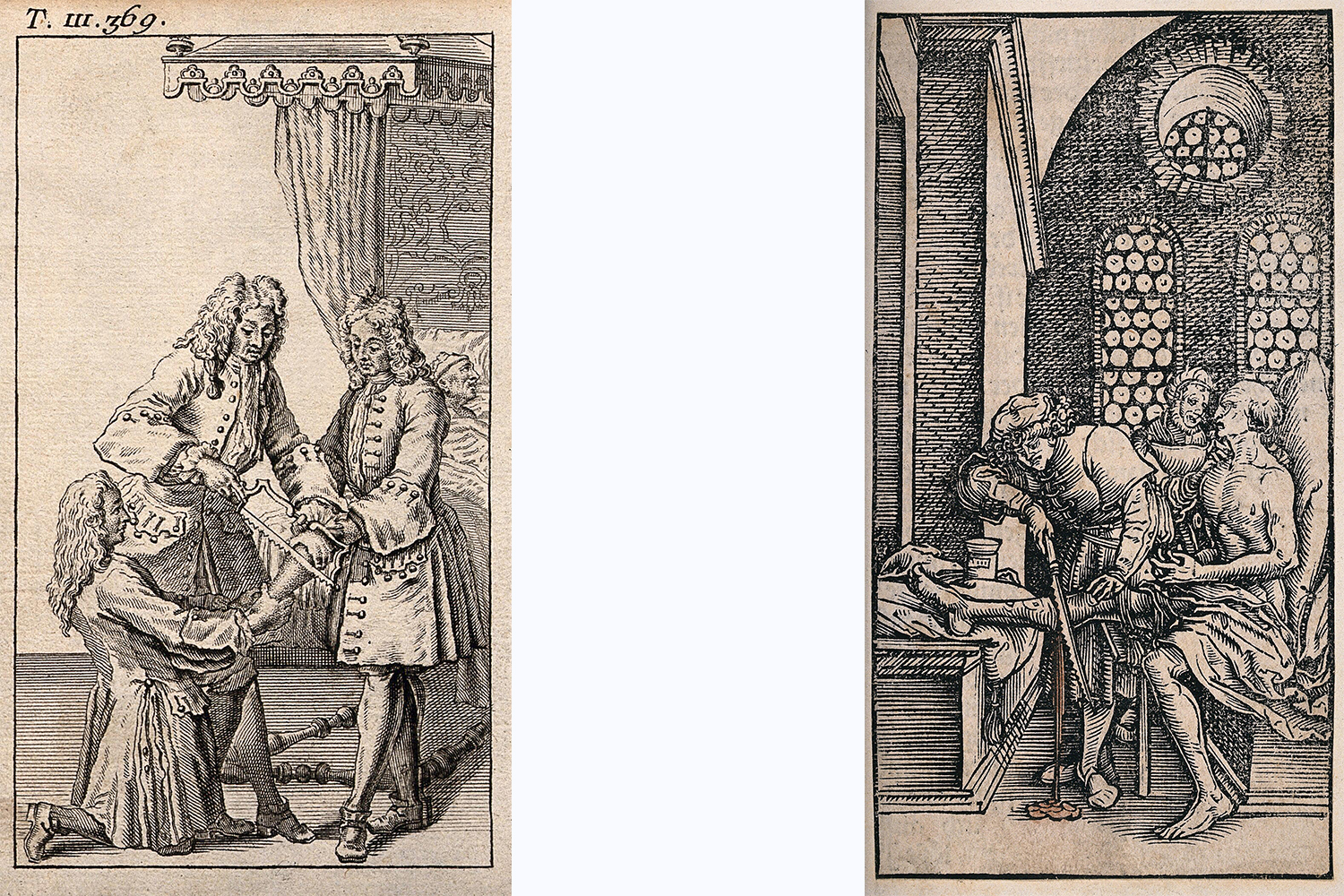


An atavistic dialectic in the philosophical, scientific, religious, psychological, and ontological spheres, such as the one represented between body and soul, triggers the project Il corpo d'aria (The Body of Air).
Körper-Leib is a terminological dualism of German origin that merges and splits at the same time the word "body". Körper refers to the body in objective and material terms, while Leib in subjective terms, relating the body to aspects of lived life and the soul.
Starting from Descartes, this dualism becomes technical-scientific and applied to the medical, psychoanalytical, and psychiatric sciences. On the body reduced to a "thing", on the organicity of feelings and thoughts, neurosciences and, consequently, pharmacology have then been focused. The latter aims, through chemical balance, at revealing knowledge and curing internal disturbances.
Christian Fogarolli's project Il corpo d'aria is based on these premises and presents some works that investigate the relationship between instrument, body, and soul. The works attempt to explore some contemporary issues and problems in relation to the body and the mind, which are elements scientifically considered as a simple organic mass that can be modified, cured, and redeemed. The research represents an evolutionary phase and is coherent with the artist's entire path based on a contemporary vision of illness, deviance, and treatment approaches.
The project on display leads to a critical view of the body, seen as a simple organism and often reduced to the categories of today's natural sciences, such as biochemistry and genetics.
The installations and the photographic works, which have been specially created, have been conceived starting from these thoughts and in reference to how science, by definition, denies itself as a consequence of the birth of new premises. This implies a constant loss of meanings to the detriment of causes towards a utopian truth.
In Ideas for an Emotional Theory, Jean-Paule Sartre says that a face uses the same muscular, arterial and nervous energy in the act of laughing and crying, but we cannot say for this reason that laughter and crying are the same things. The loss of the "meaning" of laughter or tears will lead to the consequent hegemony of instrument, technique, and matter.
The works that compose Il corpo d'aria seem to form an aseptic space for investigation and operation through diagnostic methods. They are composed of photographic images from archives of medical institutions, found objects such as instruments, artificial lights, and chemical liquids. By continuously blurring symptom and cure, Fogarolli evokes the contemporary paradox in which development and technical reason can be themselves part of the problem.
An atavistic dialectic in the philosophical, scientific, religious, psychological, and ontological spheres, such as the one represented between body and soul, triggers the project Il corpo d'aria (The Body of Air).
Körper-Leib is a terminological dualism of German origin that merges and splits at the same time the word "body". Körper refers to the body in objective and material terms, while Leib in subjective terms, relating the body to aspects of lived life and the soul.
Starting from Descartes, this dualism becomes technical-scientific and applied to the medical, psychoanalytical, and psychiatric sciences. On the body reduced to a "thing", on the organicity of feelings and thoughts, neurosciences and, consequently, pharmacology have then been focused. The latter aims, through chemical balance, at revealing knowledge and curing internal disturbances.
Christian Fogarolli's project Il corpo d'aria is based on these premises and presents some works that investigate the relationship between instrument, body, and soul. The works attempt to explore some contemporary issues and problems in relation to the body and the mind, which are elements scientifically considered as a simple organic mass that can be modified, cured, and redeemed. The research represents an evolutionary phase and is coherent with the artist's entire path based on a contemporary vision of illness, deviance, and treatment approaches.
The project on display leads to a critical view of the body, seen as a simple organism and often reduced to the categories of today's natural sciences, such as biochemistry and genetics.
The installations and the photographic works, which have been specially created, have been conceived starting from these thoughts and in reference to how science, by definition, denies itself as a consequence of the birth of new premises. This implies a constant loss of meanings to the detriment of causes towards a utopian truth.
In Ideas for an Emotional Theory, Jean-Paule Sartre says that a face uses the same muscular, arterial and nervous energy in the act of laughing and crying, but we cannot say for this reason that laughter and crying are the same things. The loss of the "meaning" of laughter or tears will lead to the consequent hegemony of instrument, technique, and matter.
The works that compose Il corpo d'aria seem to form an aseptic space for investigation and operation through diagnostic methods. They are composed of photographic images from archives of medical institutions, found objects such as instruments, artificial lights, and chemical liquids. By continuously blurring symptom and cure, Fogarolli evokes the contemporary paradox in which development and technical reason can be themselves part of the problem.
An atavistic dialectic in the philosophical, scientific, religious, psychological, and ontological spheres, such as the one represented between body and soul, triggers the project Il corpo d'aria (The Body of Air).
Körper-Leib is a terminological dualism of German origin that merges and splits at the same time the word "body". Körper refers to the body in objective and material terms, while Leib in subjective terms, relating the body to aspects of lived life and the soul.
Starting from Descartes, this dualism becomes technical-scientific and applied to the medical, psychoanalytical, and psychiatric sciences. On the body reduced to a "thing", on the organicity of feelings and thoughts, neurosciences and, consequently, pharmacology have then been focused. The latter aims, through chemical balance, at revealing knowledge and curing internal disturbances.
Christian Fogarolli's project Il corpo d'aria is based on these premises and presents some works that investigate the relationship between instrument, body, and soul. The works attempt to explore some contemporary issues and problems in relation to the body and the mind, which are elements scientifically considered as a simple organic mass that can be modified, cured, and redeemed. The research represents an evolutionary phase and is coherent with the artist's entire path based on a contemporary vision of illness, deviance, and treatment approaches.
The project on display leads to a critical view of the body, seen as a simple organism and often reduced to the categories of today's natural sciences, such as biochemistry and genetics.
The installations and the photographic works, which have been specially created, have been conceived starting from these thoughts and in reference to how science, by definition, denies itself as a consequence of the birth of new premises. This implies a constant loss of meanings to the detriment of causes towards a utopian truth.
In Ideas for an Emotional Theory, Jean-Paule Sartre says that a face uses the same muscular, arterial and nervous energy in the act of laughing and crying, but we cannot say for this reason that laughter and crying are the same things. The loss of the "meaning" of laughter or tears will lead to the consequent hegemony of instrument, technique, and matter.
The works that compose Il corpo d'aria seem to form an aseptic space for investigation and operation through diagnostic methods. They are composed of photographic images from archives of medical institutions, found objects such as instruments, artificial lights, and chemical liquids. By continuously blurring symptom and cure, Fogarolli evokes the contemporary paradox in which development and technical reason can be themselves part of the problem.


